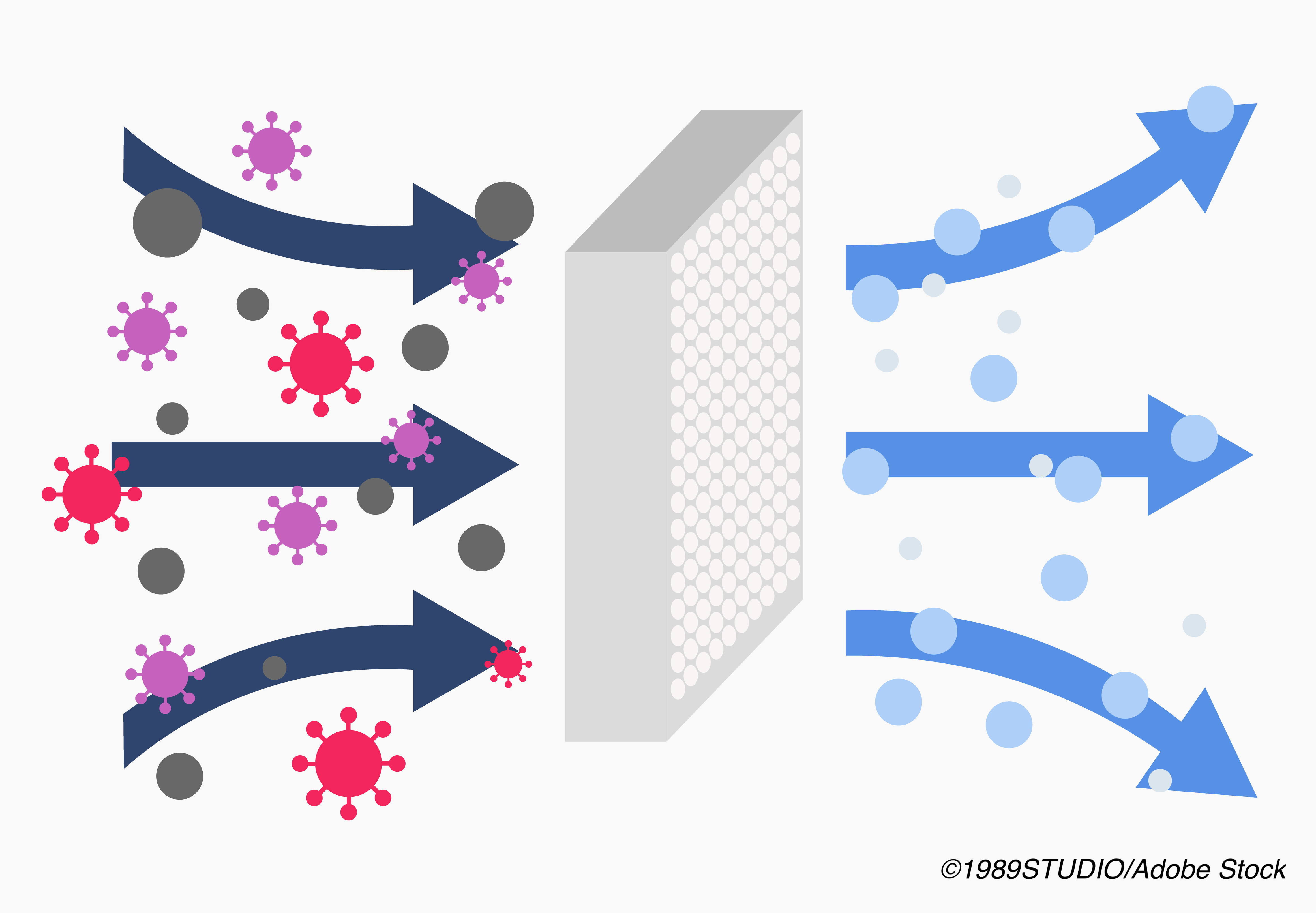CDC researchers found that adding portable high efficiency particulate air (HEPA) cleaners to a universal masking strategy led to a dramatic reduction in exposure to SARS-CoV-2 aerosols in indoor settings.
Ventillation is a tried and true method for reducing exposure to infectious aerosols, William G. Lindsley, PhD, and colleagues from the CDC explained in Morbidity and Mortality Weekly Report. However, most ventilation systems in non-clinical settings are only designed with sufficient airflow to offer fresh air and maintain comfortable temperature and humidity levels, they noted. In the face of the ongoing Covid-19 pandemic, public health organizations have recommended adding portable HEPA air cleaners in such rooms. To assess the efficacy of this solution, Lindsley and colleagues performed a simulation study to monitor levels of SARS-CoV-2 exposure with strategies involving both HEPA air cleaners and universal masking (use of face masks in public places by everyone who is not fully vaccinated).
For the analysis, a simulated infected meeting participant exhaling aerosols was placed in a conference room with two simulated uninfected participants and a simulated uninfected speaker. Two HEPA air cleaners were used in four different locations: “1) center of the room on the floor behind the source simulator; 2) left and right sides of the room on the floor; 3) left and right sides of the room and elevated 32 in (0.8 m); and 4) front and back of the room on the floor,” they explained. Control experiments used no air cleaners.
“The concentrations of 0.3 μm to 3 μm aerosol particles were measured at the mouth of each receiver using optical particle counters (Model 1.108, Grimm Technologies, Inc.) to determine the exposure of each receiver simulator to aerosol particles,” they wrote. “When the simulators were masked, the particle counters collected aerosol samples from inside the masks (i.e., the particle counter measured the concentration of the aerosol being inhaled by the receiver simulator). For each optical particle counter, the total aerosol mass concentration was averaged over 60 minutes to determine the mean aerosol mass concentration (mean aerosol exposure) to which each receiver was exposed. Each experiment was repeated four times for a total of 20 tests.”
The researchers found that adding the two HEPA air cleaners reduced overall SARS-CoV-2 aerosol exposure by up to 65% when universal masking was not in place; meanwhile, universal masking alone reduced aerosol concentration by 72%.
When combined, two HEPA air filters plus universal masking reduced overall exposure by up to 90%.
“Portable HEPA air cleaners offer a simple means to increase the filtration of aerosol particles from a room without modifying the existing building ventilation system. The optimal location for HEPA air cleaners will depend upon the unique conditions in each room, but they are likely to be most effective when they are placed as close to the occupants as is practicable,” Lindsley and colleagues wrote. “Larger reductions in exposure occur when air cleaners are used in combination with universal masking. These findings support the utility of portable HEPA air cleaners and universal masking for reducing exposure to indoor aerosols containing SARS-CoV-2. Efforts to reduce SARS-CoV-2 aerosol exposure could help limit transmission of the virus and decrease incidences of Covid-19 illness and death.”
The study authors acknowledged some limitations to their analysis, including that airflow patterns will vary among buildings and rooms in the real world; the simulated aerosol source was placed in a single position, whereas a real person would likely move around or change position; the study only used one aerosol source; the study did not account for particles outside of the 0.3 μm to 3 μm size range; and that the study assessed aerosol exposure, not disease transmission.
John McKenna, Associate Editor, BreakingMED™
Cat ID: 190
Topic ID: 79,190,503,728,791,730,933,190,926,192,927,151,928,925,934




Create Post
Twitter/X Preview
Logout